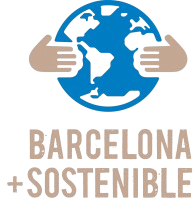Bioengineering to combat the effects of climate change
IBE researchers design strategies to modify organisms that would help to offset the impact of humans on the Earth
 As the human population and its impact on the planet increase, in the near future many ecosystems around the world will be at risk of experiencing a potentially catastrophic collapse. Researchers of the Complex Systems Laboratory of the IBE and the UPF, together with researchers of the Centre for Mathematical Research (CRM), have published an article in the journal Royal Society Open Science, in which they propose mathematical models to develop strategies to contribute to the conservation of ecosystems through synthetic biology.
As the human population and its impact on the planet increase, in the near future many ecosystems around the world will be at risk of experiencing a potentially catastrophic collapse. Researchers of the Complex Systems Laboratory of the IBE and the UPF, together with researchers of the Centre for Mathematical Research (CRM), have published an article in the journal Royal Society Open Science, in which they propose mathematical models to develop strategies to contribute to the conservation of ecosystems through synthetic biology.
The classic concept of terraforming consists of modifying habitable planets to make them more similar to Earth. In this case, the concept is adapted to modifying our planet by restoring its ecosystems. Therefore, the authors propose as a possibility for future action, the modification of ecosystems at risk using the genetic engineering of species.
One of the main advantages of this approach as a complement to existing technologies is organisms’ ability to replicate and disseminate, which allows working on a large scale. “Synthetic organisms have great potential, they could stop catastrophic changes or re-establish suitable conditions to preserve diverse ecosystems”, says Ricard Solé, leader of the study.
Modified organisms to conserve the ecosystems
Ricard Solé, ICREA research professor at UPF and researcher at IBE, explains that “a first step in this direction is the development of mathematical models that allow us to decide the best strategies for the bioengineering of the biosphere”. In the study, the researchers propose genetically modifying a particular species of microorganism already present in the ecological context. As there would be a risk of it expanding and becoming invasive, they propose making it dependent on interaction with other living beings.
In addition, the authors have studied the situation of semi-desert ecosystems, where the increase in temperature will cause a rapid transition to a desert state. A key component of the ecosystem is the layer known as the soil crust, where there are several organisms, including cyanobacteria. They suggest the possibility of genetically modifying them to improve water retention in the crust, which would allow expanding plant cover.
In addition, they have explored a strategy to deal with the accumulation of waste such as plastic in aquatic ecosystems. A modified microorganism would use the remains of plastic in the oceans as a substrate and would destroy them. The system would be self-limiting so that once it had performed its function and no plastic remained, the organism could no longer survive. This study is part of the research that is being carried out within the European project MADONNA (Microbial deployment of new-to-nature chemistries for refactoring the barriers between living and non-living matter), in which researchers from different fields will develop experimental approaches to eradicate industrial waste and pollution through the use of synthetic biology and biotechnology.
In conclusion, in this new study, the researchers put forward the first steps towards a theory of general population dynamics to understand how organisms modified using bioengineering would behave in the ecosystems. As the authors point out, “despite not being able to leave everything in the hands of technology, it will have to be used in order to preserve the biosphere and us as part of it”.
Reference article
Solé R, Montañez R, Duran-Nebreda S, Rodriguez-Amor D, Vidiella B, Sardanyés J. Population dynamics of synthetic terraformationmotifs. R. Soc. Open sci, 2018. http://dx.doi.org/10.1098/rsos.180121






















